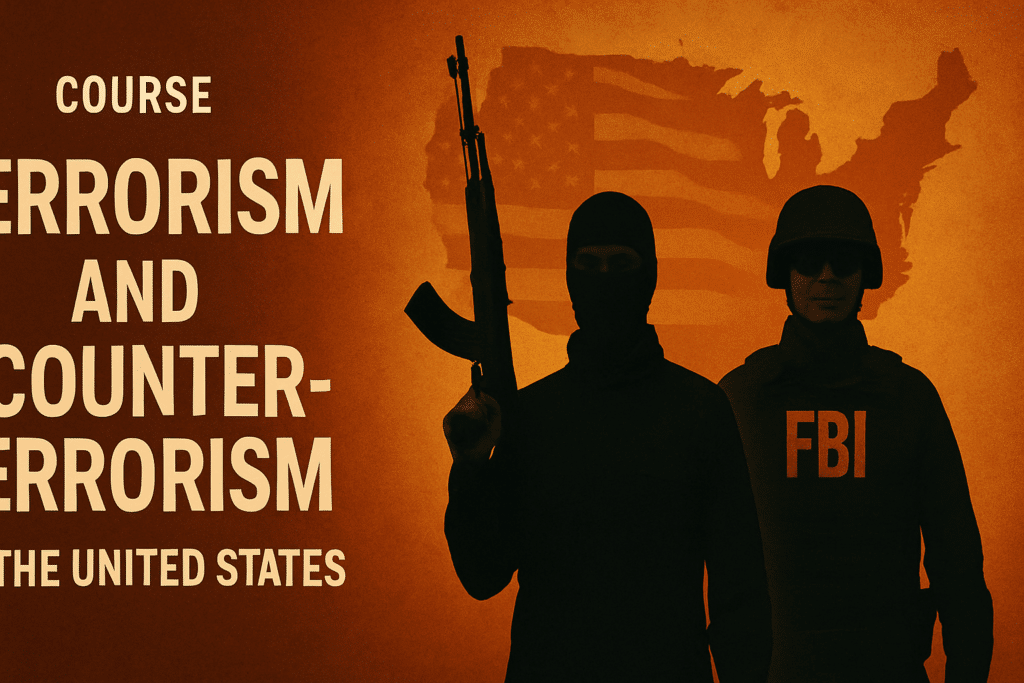COURSE DESCRIPTION
This course provides an in-depth examination of terrorism and terrorism threats within the United States, exploring the historical evolution, ideological motivations, and operational strategies of domestic and international terrorist actors. Students will analyze key events, such as the Oklahoma City bombing, the September 11 attacks, and recent lone-wolf incidents, to understand the changing nature of terrorism. The course evaluates the roles of various ideologies, including far-right extremism, jihadist-inspired terrorism, and other domestic movements, as well as the socio-political and cultural factors contributing to radicalization. Additionally, it assesses U.S. counterterrorism policies, intelligence frameworks, and legal measures, focusing on their effectiveness, challenges, and implications for civil liberties. Through critical analysis, case studies, and policy discussions, students will develop a comprehensive understanding of terrorism threats and responses in the U.S. context.
Learning Objectives
Upon completion of this course, students will be able to:
-
Trace Historical Developments: Examine the historical evolution of terrorism in the United States, identifying key events, actors, and ideological shifts from the 20th century to the present.
-
Analyze Ideological Drivers: Assess the ideological motivations behind various terrorist movements in the U.S., including far-right extremism, jihadist ideologies, and other domestic ideologies, and their impact on radicalization processes.
-
Evaluate Terrorist Tactics: Critically analyze the operational strategies, recruitment methods, and use of technology by terrorist actors, including the role of the internet and social media in modern terrorism.
-
Assess Counterterrorism Strategies: Evaluate the effectiveness of U.S. counterterrorism policies, including intelligence gathering, law enforcement efforts, legislative measures, and international cooperation.
-
Explore Societal Impacts: Investigate the societal, political, and cultural impacts of terrorism and counterterrorism efforts, including their effects on civil liberties, public perception, and national security debates.
-
Engage in Policy Analysis: Critically analyze the ethical and legal implications of counterterrorism measures and propose balanced policy solutions to address terrorism threats while safeguarding democratic principles.
Learning Outcomes
By the end of the course, students will demonstrate the ability to:
-
Articulate Key Concepts: Clearly explain the ideologies, motivations, and operational tactics of terrorist groups in the U.S. through written assignments and oral presentations.
-
Conduct Event Analysis: Produce a detailed case study analysis of a significant terrorist incident in the U.S., applying theoretical frameworks to evaluate its causes, consequences, and policy responses.
-
Evaluate Sources Critically: Synthesize primary sources (e.g., government reports, terrorist manifestos) and academic literature to construct evidence-based arguments about terrorism trends and threats.
-
Develop Policy Recommendations: Propose informed and actionable policy recommendations for addressing terrorism threats, balancing security needs with the protection of civil liberties.
-
Engage in Collaborative Discussion: Participate in group discussions and simulations to explore diverse perspectives on terrorism and counterterrorism strategies in the U.S.
-
Demonstrate Analytical Rigor: Approach the study of terrorism with critical thinking and sensitivity to the complex interplay of ideological, political, and social factors.
COURSE CMS SPECIFICS
Credit value: 3-6 (US standard) | 6-12 (ECTS standard)
Indicative duration (full-time): 4-10 weeks
Indicative duration (part-time): 5-12 weeks
Certificate: Yes
COURSE METHODOLOGY
This course is based on standard EUCLID methodology. Students may refer to the following resources:
Academic Guidelines (HQ version)
Academic Guidelines (most recent version, even if unofficial)
Student Orientation Guidelines (most recent version, even if unofficial)
Zotero instructions for EUCLID students
Grammarly instructions for EUCLID students
REQUIRED TEXTS AND MATERIAL
Course material is provided in the form of embedded videos, audio MP3s, and/or downloadable PDFs.
ASSESSMENT METHODS
Written Assignments, Response Papers and Major Paper: 40% (must pass)
Quiz: 10% (must pass)
Final Exam: 50% (must pass)
COURSE SYLLABUS | ACCESS TO 7 PERIODS


